
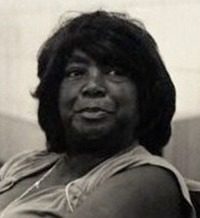
MADRINHA EUNICE O ÍCONE NEGRO DO SAMBA NO BRASIL
Redação Le Afrique
Leitura em Português e Inglês
Um marco na história e na cultura do país. O baluarte do samba brasileiro chama-se Deolinda Madre, ou seja, a matriarca do samba, mais conhecida como Madrinha Eunice em São Paulo. Madrinha Eunice considerada a dama do samba no Brasil, foi a primeira mulher a fundar em 1937 a Escola de Samba Lavapés Pirata Negro que tem 85 anos em atividade. A mais antiga escola de samba em São Paulo. Madrinha Eunice construiu uma história deixando um legado dentro da cultura no país. Uma mulher sambista, que através do samba e da sua ancestralidade e fé. Conquistou o seu espaço, reconhecimento e notoriedade num movimento cultural que até então, era dominado por homens. Uma grande ativista do movimento negro, que comandava com mão de ferro, assim por dizer; a Sociedade Recreativa Beneficente Esportiva da Escola de Samba Lavapés Pirata Negro. Atualmente não temos mais esta grande mulher entre nós, mais a sua história permanece viva através de sua neta Rosemeire Marcondes, que é presidente de honra da Lavapés. E nos conta, mais sobre a Madrinha Eunice, a Dama do Samba no Brasil. Para Rosemeire as memórias ainda estão muito viva, ela era uma mulher de personalidade forte, corajosa, que não só marcou uma era, mas deixou uma marca na história do samba no país. Ela era uma mulher tão forte que até hoje é fonte de estudo, homenagens e muitas referências dentro do samba. Uma mulher à frente do seu tempo, ela era independente economicamente uma inspiração para as mulheres negras de várias gerações. A importância da história desta mulher é evidente, dentro da cultura e da história do samba no Brasil. Ela lutou muito para a oficialização e o reconhecimento cultural do carnaval no Brasil, diz; Rosemeire Marcondes. A importância deste legado é tão necessária para a história do samba brasileiro que as informações sobre a memória viva da Madrinha Eunice é uma realidade na história do samba no Brasil. Ela nasceu filha de escravos no ano de 1909 na cidade de Piracicaba no interior paulista. Chegou na capital com apenas 11 anos de idade viveu e construiu a sua trajetória de vida e história nas imediações do bairro da Liberdade. Por força e obra do destino atualmente Madrinha Eunice está imortalizada e presente na Praça da Liberdade em uma estátua de bronze de 1,7 metros de altura, por 60 centímetros de largura, ela é retratada da forma em que era vista, dançando, de saia rodada, com turbante, colares e pulseiras. Uma identidade única da imagem de uma mulher que foi pioneira do samba no Brasil. Alguns ativistas destacam este reconhecimento público como um tributo de importante força da ancestralidade africana na capital. Esta homenagem veio através do Departamento de Patrimônio Histórico – DPH da Prefeitura. Com uma histórica tão rica com várias expressões culturais, Madrinha Eunice permanece viva através de muitos trabalhos e pesquisas. A pesquisadora do Instituto de Artes da Unesp é uma das idealizadoras do documentário “Lavapés: Ancestralidade e Permanência”. De Carminda Mendes André, que disse; em outro momento que a vivência mostra um “feminismo muito forte em solo nacional”, e faz pensar sobre as origens do movimento.
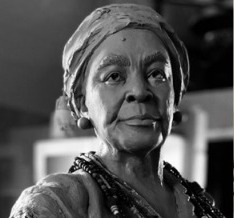
O Legado
O legado deixado como uma grande herança, está nas mãos de Rosemeire Marcondes desde a morte da avó. Que luta pelo reconhecimento da importância dela na cultura paulistana. Este recente reconhecimento público foi muito honroso não só para o samba em São Paulo, mas para o povo negro, diz: Rosemeire. Para ela o fato da estátua estar instalada no bairro da Liberdade, é uma afirmação de valorização da cultura africana. Desde a imigração japonesa, que as origens pretas do bairro estavam sendo apagadas e esquecidas. Rosemeire nos revela que Madrinha Eunice era uma mulher religiosa, adepta da quimbanda e que também frequentava a Igreja Católica. Ela tinha o orixá Exú Veludo que é patrono da escola. Madrinha Eunice sempre estará viva nas minhas melhores lembranças, era uma mulher forte, guerreira, nasceu com uma missão a de viver o samba, a fé e a sua ancestralidade através do Carnaval. Trabalhou até os seus últimos dias de vida, na escola que ela criou e se fez. “Ela é a história do samba paulistano, a matriarca de todas as escolas de samba”, finaliza Rosemeire.

Uma eterna saudade….
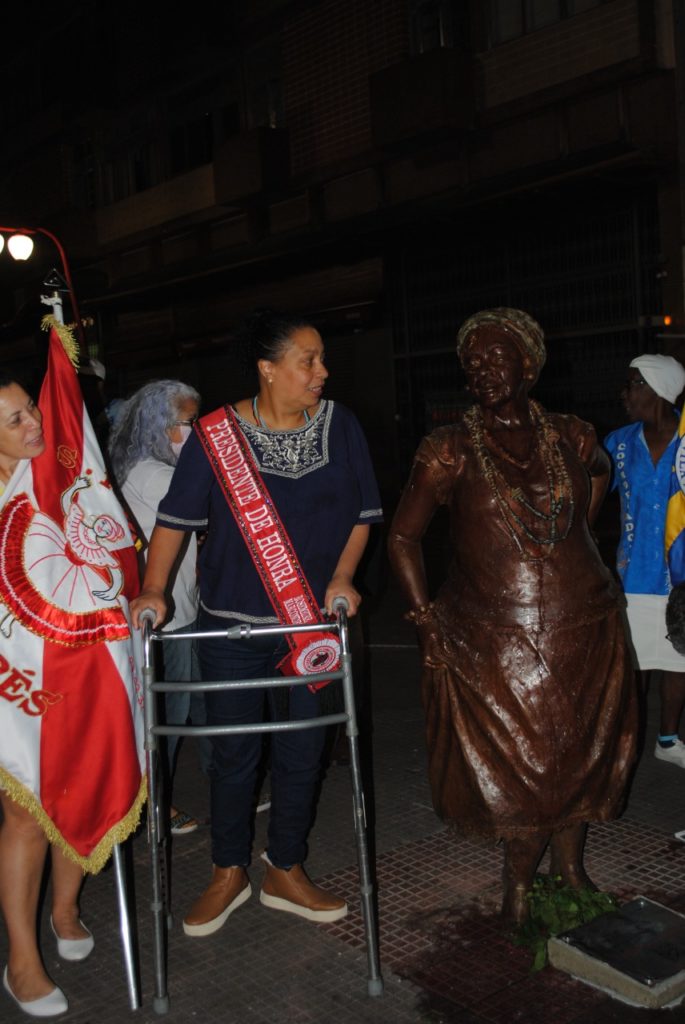
Encontro de gerações
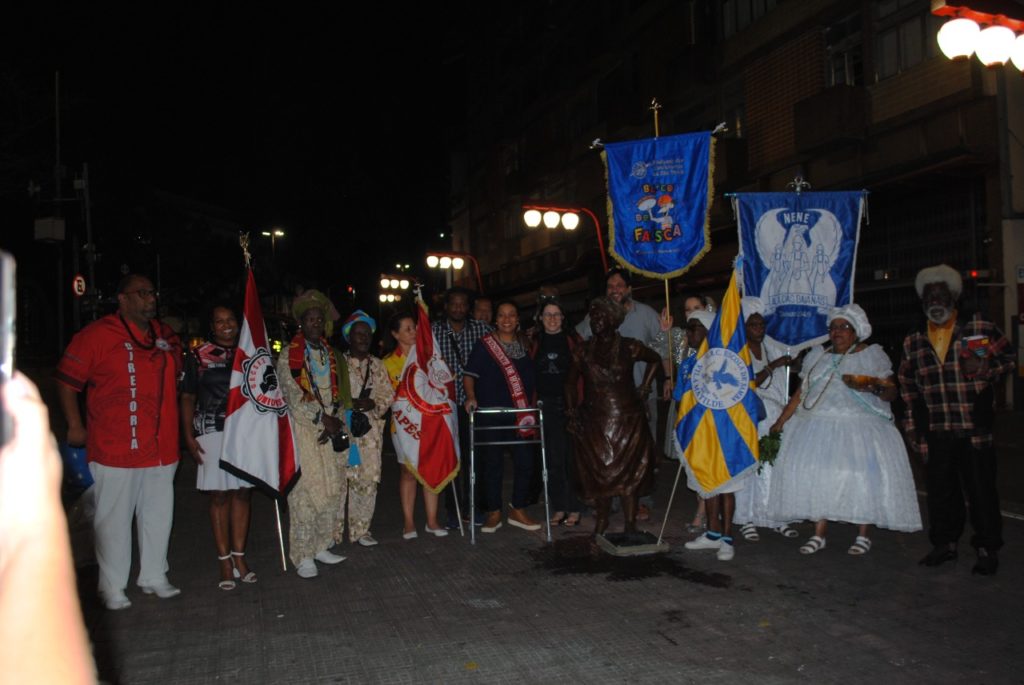

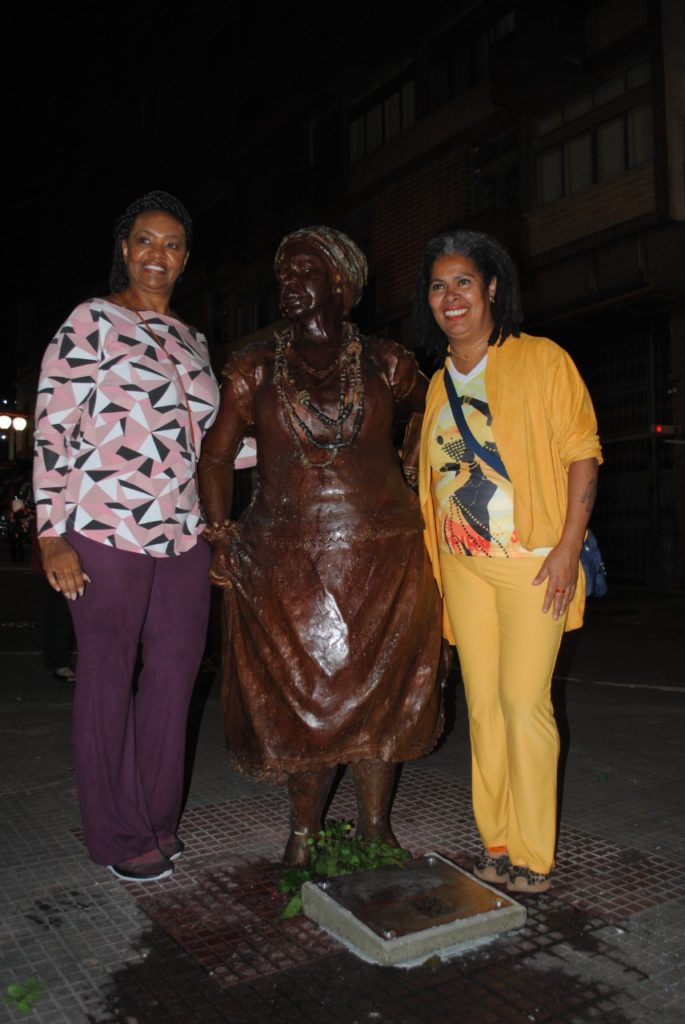


Uma homenagem que ficou para a história do Samba no Brasil.
#lavapespiratanegro #sambanobrasil #carnavalbrasil #carnavalemsaopaulo #madrinhaeunice #magazineleafriquestylebrasil
GODMOTHER EUNICE
THE BLACK ICON OF SAMBA IN BRAZIL
A landmark in the country’s history and culture. The stronghold of Brazilian samba is called Deolinda Madre, that is, the matriarch of samba, better known as Madrinha Eunice in São Paulo. Madrinha Eunice, considered the lady of samba in Brazil, was the first woman to found the Lavapés Pirata Negro Samba School in 1937, which has been in operation for 85 years. The oldest samba school in São Paulo. Godmother Eunice built a history leaving a legacy within the culture in the country. A samba woman, who through samba and her ancestry and faith. She conquered her space, recognition and notoriety in a cultural movement that until then was dominated by men. A great activist in the black movement, which she ruled with an iron fist, so to speak; the Beneficent Sports Recreation Society of the Lavapés Pirata Negro Samba School. Currently, we no longer have this great woman among us, but her story remains alive through her granddaughter Rosemeire Marcondes, who is Lavapés’ honorary president. And tell us more about Madrinha Eunice, the Dama do Samba in Brazil. For Rosemeire, the memories are still very much alive, she was a woman with a strong, courageous personality, who not only marked an era, but left a mark on the history of samba in the country. She was such a strong woman that to this day she is a source of study, tributes and many references within samba. A woman ahead of her time, she was economically independent and an inspiration to black women across generations. The importance of this woman’s history is evident, within the culture and history of samba in Brazil. She fought hard for the officialization and cultural recognition of Carnival in Brazil, she says; Rosemeire Marcondes. The importance of this legacy is so necessary for the history of Brazilian samba that information about the living memory of Madrinha Eunice is a reality in the history of samba in Brazil. She was born to slaves in 1909 in the city of Piracicaba in the interior of São Paulo. She arrived in the capital when she was only 11 years old, she lived and built her life and history trajectory in the vicinity of the Liberdade neighborhood. By force and work of fate, Madrinha Eunice is currently immortalized and present in Praça da Liberdade in a bronze statue of 1.7 meters high, by 60 centimeters wide, she is portrayed the way she was seen, dancing, in a skirt round, with turban, necklaces and bracelets. A unique identity of the image of a woman who pioneered samba in Brazil. Some activists highlight this public recognition as an important tribute to African ancestry in the capital. This homage came through the City Hall’s Department of Historical Heritage – DPH. With such a rich history with various cultural expressions, Madrinha Eunice remains alive through many works and research. The researcher at the Unesp Institute of Arts is one of the creators of the documentary “Lavapés: Ancestrality and Permanence”. From Carminda Mendes André, who said; at another time, the experience shows a “very strong feminism on national soil”, and makes one think about the origins of the movement.
The legacy
The legacy left as a great inheritance has been in the hands of Rosemeire Marcondes since the death of her grandmother. Who fights for the recognition of her importance in the culture of São Paulo. This recent public recognition was very honorable not only for samba in São Paulo, but for the black people, says: Rosemeire. For her, the fact that the statue is installed in the Liberdade neighborhood is an affirmation of the appreciation of African culture. Since Japanese immigration, the neighborhood’s black origins were being erased and forgotten. Rosemeire reveals that Madrinha Eunice was a religious woman, adept at Quimbanda and who also attended the Catholic Church. She had the orixá Exú Veludo who is the patron of the school. Godmother Eunice will always be alive in my best memories, she was a strong woman, a warrior, born with a mission to live samba, faith and her ancestry through Carnival. She worked until the last days of her life, in the school she created and made herself. “She is the history of samba from São Paulo, the matriarch of all samba schools”, concludes Rosemeire.


Fantástico